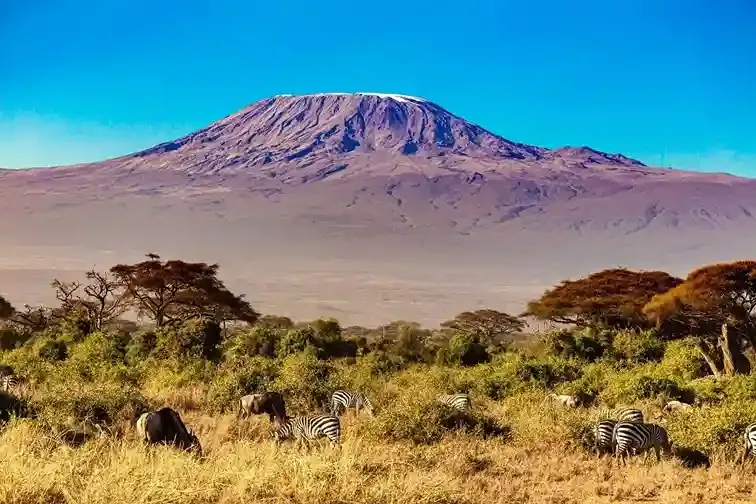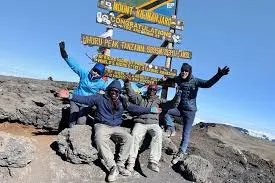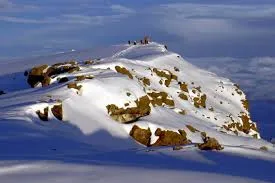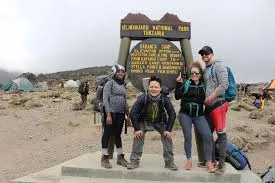Cultural Significance of Kilimanjaro to Local Communities
Mount Kilimanjaro is more than Africa’s highest peak—it’s a cultural cornerstone for the Chagga and Maasai communities. Revered as a sacred space, it shapes traditions, myths, and livelihoods. From spiritual rituals to economic contributions, Kilimanjaro holds deep meaning for locals. Capable Africa Tours invites you to explore this rich heritage while trekking its slopes, connecting with the vibrant cultures that call this mountain home. Below, dive into the cultural significance of Kilimanjaro and discover how it continues to inspire.
Discover Kilimanjaro’s Culture Now
Why Kilimanjaro Matters to Local Communities
Mount Kilimanjaro, standing at 5,895 meters, is not only a natural wonder but a cultural and spiritual beacon for the Chagga and Maasai people in Tanzania. For centuries, these communities have woven the mountain into their traditions, economies, and belief systems. The Chagga, who live on Kilimanjaro’s fertile slopes, see it as a sacred home for ancestral spirits, while the Maasai, nomadic pastoralists, view it as a divine gift from Ngai, their God. With Capable Africa Tours, you can explore this cultural tapestry while trekking, gaining insights into local heritage through village visits and guided tours.
Cultural Highlights of Kilimanjaro
- Chagga Spiritual Beliefs: The mountain is a dwelling place for spirits, influencing rituals like offerings and rain-making ceremonies.
- Maasai Mythology: Kilimanjaro is seen as a gift from Ngai, symbolizing protection and sustenance in oral traditions.
- Economic Impact: Over 10,000 locals work in tourism annually, with Kilimanjaro generating millions in revenue for communities.
- Agricultural Significance: The mountain’s slopes support coffee and banana farming, sustaining Chagga livelihoods.
- Cultural Tourism: Capable Africa Tours offers immersive experiences in Chagga villages, showcasing traditions and crafts.
The Chagga People and Kilimanjaro
The Chagga, one of Tanzania’s largest ethnic groups, have lived on Kilimanjaro’s slopes for over 400 years. They view the mountain as a sacred entity, central to their spiritual and daily life. Their myths describe Kilimanjaro as a home for ancestral spirits, and they perform rituals like offerings of banana beer or livestock to seek blessings for harvests or rain. The Chagga’s agricultural expertise, particularly in coffee farming, thrives due to the mountain’s fertile volcanic soil, contributing to 60% of Tanzania’s coffee exports. Capable Africa Tours offers cultural extensions to Chagga villages, where you can witness traditional dances, visit coffee farms, and explore historic caves used during tribal conflicts.
Chagga Cultural Practices
- Rituals and Ceremonies: Offerings to spirits at sacred sites, such as caves and waterfalls, to ensure prosperity.
- Agriculture: Cultivation of coffee, bananas, and maize on 1,200 km² of fertile slopes, supporting 1.2 million Chagga.
- Traditional Homes: Conical huts made of wood and thatch, designed to blend with the mountain’s environment.
- Community Structure: Organized in clans with chiefs who historically mediated disputes and led rituals.
Chagga and Kilimanjaro
| Metric | Value |
|---|---|
| Chagga Population | ~1.2 million |
| Agricultural Land | 1,200 km² |
| Coffee Production | ~40,000 tons annually |
| Tourism Employment | ~7,000 Chagga guides/porters |
The Maasai and Kilimanjaro’s Spiritual Role
The Maasai, semi-nomadic pastoralists, revere Kilimanjaro as a sacred gift from Ngai, their supreme deity. Known as “Ol Doinyo Oibor” (White Mountain), it symbolizes divine protection and sustenance. Maasai oral traditions include stories of the mountain’s creation, and it features in blessings for livestock and community well-being. While the Maasai live primarily on the plains below, their cultural connection to Kilimanjaro influences their ceremonies and identity. Capable Africa Tours integrates Maasai cultural experiences, allowing trekkers to engage with their traditions, such as warrior dances and beadwork demonstrations.
Maasai Cultural Connections
- Mythology: Legends describe Ngai creating Kilimanjaro to provide water and protection for the Maasai.
- Ceremonies: Blessings for cattle and warriors often reference the mountain’s spiritual power.
- Economic Role: ~3,000 Maasai work as porters or guides, benefiting from Kilimanjaro’s tourism industry.
- Craftsmanship: Maasai beadwork and leather goods are sold in markets near Kilimanjaro, supporting local artisans.
Maasai and Kilimanjaro
| Metric | Value |
|---|---|
| Maasai Population in Region | ~200,000 |
| Tourism Employment | ~3,000 guides/porters |
| Livestock Supported | ~500,000 cattle in region |
| Cultural Tourism Revenue | ~$2 million annually |
Experience Kilimanjaro’s Cultural Heritage
Watch this video to see how Capable Africa Tours brings you closer to the Chagga and Maasai cultures, showcasing their traditions, rituals, and deep connection to Mount Kilimanjaro.
Economic and Social Impact of Kilimanjaro
Kilimanjaro is a lifeline for local economies, supporting over 10,000 jobs in tourism annually, including guides, porters, and vendors. The mountain’s slopes provide fertile land for agriculture, with the Chagga producing 40,000 tons of coffee yearly, contributing to 60% of Tanzania’s coffee exports. Tourism generates approximately $50 million annually for the region, with 70% benefiting local communities. Capable Africa Tours prioritizes fair wages and community projects, such as schools and water systems, ensuring your trek supports sustainable development.
Economic Contributions
- Tourism Jobs: Over 10,000 locals employed as guides, porters, and support staff.
- Agricultural Output: Coffee and banana farming supports 80% of Chagga households.
- Revenue Impact: ~$50 million in annual tourism revenue, with 70% staying local.
- Community Projects: Funding for 15+ schools and 20+ water projects in the region.
Cultural Tourism with Capable Africa Tours
Capable Africa Tours enhances your Kilimanjaro trek with immersive cultural experiences. Visit Chagga villages to explore traditional homes, taste local cuisine, and learn about coffee production. Engage with Maasai communities through warrior dances, storytelling, and craft markets. Our tours are designed to respect and celebrate local traditions while fostering sustainable tourism. Join us to connect with the heart of Kilimanjaro’s cultural heritage.
Cultural Experience Highlights
- Chagga Village Tours: Visit Marangu or Materuni to see coffee farms and historic caves.
- Maasai Cultural Visits: Experience warrior dances and beadwork demonstrations near Moshi.
- Local Markets: Shop for handmade crafts and interact with artisans in Arusha or Moshi.
- Cultural Guides: Local Chagga and Maasai guides share authentic stories and traditions.
Discover Kilimanjaro’s Cultural Heritage
Join Capable Africa Tours to explore the cultural significance of Mount Kilimanjaro while trekking its majestic slopes. Our expert guides, sustainable practices, and cultural extensions ensure an unforgettable journey. Book now to connect with Chagga and Maasai heritage!
- Immersive Chagga and Maasai cultural experiences
- Sustainable tourism supporting local communities
- Expert local guides sharing authentic traditions
- Customizable treks with cultural village visits
- All-inclusive packages with meals and transfers
Limited spots for cultural Kilimanjaro treks — book now to experience this heritage!
Plan Your Cultural Trek Now


